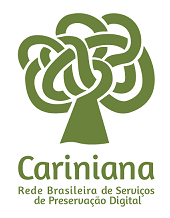Produtividade e eficiência de produção de vacas de diferentes grupos genéticos submetidas a pastagens cultivadas no pré ou pós-parto
DOI:
https://doi.org/10.5433/1679-0359.2014v35n5p2697Palavras-chave:
Charolês, Cruzamento, Ganho de peso, Índice de produção de bezerros, Nelore, Taxa de desmama.Resumo
Avaliou-se através do desenvolvimento de vacas e bezerros até o desmame aos 90 dias e também do desempenho reprodutivo desde a prenhez até a desmama, a produtividade e a eficiência de 94 vacas de corte dos grupos genéticos Charolês (CH), Nelore (NE), ½CH ½NE e ½NE ½CH submetidas aos seguintes sistemas de alimentação: vacas mantidas exclusivamente em pastagem nativa (PN); vacas mantidas em pastagem cultivada (PC), composta por aveia (Avena sativa), azevém (Lollium multiflorum) e trevo vesiculoso (Trifolium vesiculosum) durante o período de 15 de julho a 15 de setembro e o restante do período experimental em pastagem natural (PCN); e vacas mantidas em pastagem cultivada durante o período de 15 de setembro a 15 de novembro, e o restante do período em pastagem nativa (PNC). As vacas mantida em PC produziram 22,6% a mais de bezerros do que as vacas mantidas exclusivamente em PN, bem como foram mais eficientes no índice de produção de bezerros (eficiência dos rebanhos), com 57,0 vs 37,0 kg de bezerros/vaca mantida no rebanho. Na produção de kg de bezerros por vaca, as fêmeas mantidas em PC no pós-parto (69 kg) foram superiores (P<0,05) as mantidas em pastagem cultivadas no pré-parto (61 kg) e estas superiores as mantidas exclusivamente em PN (53 kg). Entre as vacas puras, as Charolês foram mais produtivas com maior índice de produção de bezerros necessitando de menos vacas para a produção de um bezerro. Entre as vacas cruzadas não ocorreu diferença nas variáveis estudas (P>0,05), sendo estas superiores as puras na produtividade e eficiência produtiva.
Downloads
Downloads
Publicado
Como Citar
Edição
Seção
Licença
Copyright (c) 2014 Semina: Ciências Agrárias

Este trabalho está licenciado sob uma licença Creative Commons Attribution-NonCommercial 4.0 International License.
Semina: Ciências Agrárias adota para suas publicações a licença CC-BY-NC, sendo os direitos autorais do autor, em casos de republicação recomendamos aos autores a indicação de primeira publicação nesta revista.
Esta licença permite copiar e redistribuir o material em qualquer meio ou formato, remixar, transformar e desenvolver o material, desde que não seja para fins comerciais. E deve-se atribuir o devido crédito ao criador.
As opiniões emitidas pelos autores dos artigos são de sua exclusiva responsabilidade.
A revista se reserva o direito de efetuar, nos originais, alterações de ordem normativa, ortográfica e gramatical, com vistas a manter o padrão culto da língua e a credibilidade do veículo. Respeitará, no entanto, o estilo de escrever dos autores. Alterações, correções ou sugestões de ordem conceitual serão encaminhadas aos autores, quando necessário.




















